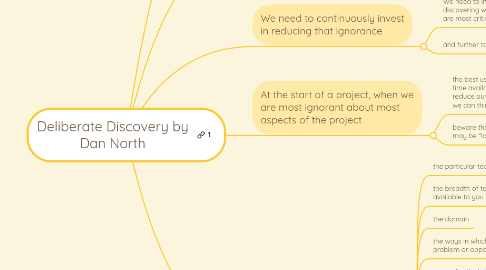Deliberate Discovery by Dan North
von Shane Sendall


1. Project estimation tips
1.1. Assume the following as fact when you estimate:
1.1.1. Several (pick a number) Unpredictable Bad Things will happen during your project
1.1.1.1. You cannot know in advance what those Bad Things will be. That’s what Unpredictable means.
1.1.1.2. The Bad Things will materially impact delivery. That’s what Bad means.
2. Our single biggest limiting factor to successful delivery is ignorance
2.1. During the life of the project our ignorance will reduce across a number of axes that are relevant to our project
2.2. Ignorance of certain factors right now are the things currently limiting us the most
2.3. We probably don’t know which ones those magic enabling factors are
2.3.1. We are second-order ignorant of which factors are currently the most constraining
2.4. Once we realise what these are, we can apply methods to consistently move forwards, but until we do, we’re shooting in the dark
3. We need to continuously invest in reducing that ignorance
3.1. We need to invest effort in firstly discovering which aspects of delivery we are most critically ignorant of
3.1.1. i.e. both where we are ignorant and where that ignorance is hampering throughput
3.2. and further to invest in reducing that ignorance
3.2.1. deliberately discovering enough to relieve the constraint and allow us to proceed
4. At the start of a project, when we are most ignorant about most aspects of the project
4.1. the best use we can possibly make of the time available is to attempt to identify and reduce our ignorance across all the axes we can think of
4.1.1. we should take a first stab at identifying these axes, and trying to figure out just how ignorant we are
4.2. beware that with up-front analysis we may be “locking in" our ignorance
4.2.1. death-by-stories
